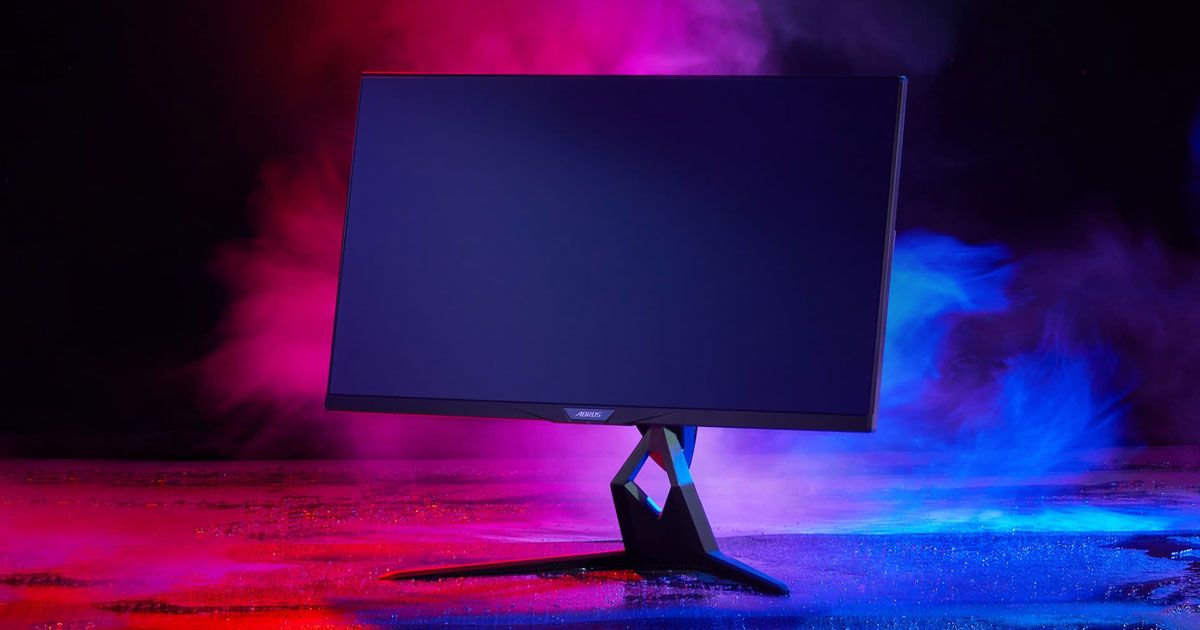Are gaming monitors worth it? If you've been browsing some of the best gaming monitors you've likely asked the same question.
Gaming monitors have exploded in popularity, especially since many of them are now being used for both PC and console gamers alike. They offer some distinct advantages over regular monitors and TVs, but as always, it's not quite as clear-cut as you'd think...
Here's everything you need to know to make the call for yourself.
Are gaming monitors worth it?
So if you're on the fence, let's break it down a little and highlight some of the pros and cons of gaming monitors, starting with arguably the most important factor - price.
Gaming monitors can be expensive
It's no secret that some of the best gaming monitors can be super expensive. Much like the best gaming laptops, we can see monitors tip the scales at above $2000 on occasion, with most of the premium displays hovering between $1000 and $1500.
New technologies such as QD-OLED are making an appearance too, which will surely tip the scales once more when it comes to price.
The price of a monitor usually aligns with the number of features it has added in. These can include higher-end versions of G-Sync or FreeSync, RGB lighting, thinner bezels, advanced ergonomics, and even more ports, such as USB-C or HDMI 2.1.
There are also factors like higher resolution, bigger screen size, and higher refresh rates which will drive up the price.
That being said, there are many options out there for less, like this monitor from ASUS, that can deliver 4K, 120hz gaming for under $1000. You'll also find a number of gaming monitors under 500 that will likely be 1440p at 144hz, 4K at 60hz, or FHD at up to 240hz.
Gaming monitors are 'faster'
So when we say 'faster', what we're talking about here is input lag and response times.
Put simply, gaming monitors are built to be as responsive as possible as many people who use them tend to lean more towards competitive play.
This applies to 'faster' or higher refresh rates too. Even the best TVs for PS5 and Xbox Series X top out at 120hz, but you can easily find 360hz gaming monitors nowadays.
Higher frame rates mean that you'll enjoy a much smoother gaming experience, which also allows you to gauge on-screen movement more effectively. This comes in especially handy with racing games and reflex-based shooters.
Overall, if you're going for speed, a gaming monitor is well worth it.
Gaming monitors are dual-purpose
This may sound like an obvious one, but hear us out.
Much like gaming laptops, it's sometimes easy to forget that gaming monitors are still monitors at the end of the day and that means that they can be used for more than just gaming.
In the same way that gaming laptops are built to withstand the heavy demands that gaming places on them, almost by default they're able to handle seriously heavy-lifting tasks compared to more traditional laptops.
For video editors, gaming monitors work nicely for those wanting to view content in high frames per second.
For designers, you'll even find that some of the higher-end monitors boast impressively wide colour coverage and the accuracy too.
And from experience, writing about gaming monitors on a gaming monitor with an IPS display is as great as it is meta...
Gaming monitors have unique designs
Again if we revisit gaming laptops, there are some parallels here in the way that gaming monitors have some uniquely gamer-orientated design that you just can't find on a regular display or TV.
We're not just talking about RGB either, although that is a massive appeal to some. We're talking about futuristic, cyberpunk, ultra-modern designs that really pack a punch.
These can turn your setup into something that's more akin to a battle station than a regular desktop arrangement.
That being said, you can also go for an understated beast too. Brands like BenQ, AOC, and LG all offer more reserved design variations that deliver in terms of power.
For the more gamer-orientated designs, brands like Gigabyte, MSI, Asus, Acer, and even Samsung (with their Odyssey series) to name a few, are worth checking out.
Gaming monitors often have anti-reflective coatings
Something you'll rarely find with TVs or some regular monitors is an anti-reflective coating to the screen itself.
These coatings are fantastic for competitive gamers but also come in very handy if you're working in a well-lit room.
The good news is that they are becoming more commonplace nowadays, so as long as you know how to clean your monitor without damaging it, you're getting a real quality-of-life improvement for both gaming and everyday usage.
Verdict
Gaming monitors are absolutely worth it if you're looking for a competitive edge, but they're also great for productivity too, which gives you more bang for your buck.
If you're thinking about whether to go for a gaming monitor over a TV, you can, especially as many gaming monitors nowadays are 43 inches.
The only people we'd say to not go for a gaming monitor would be high-level design professionals, as there are specific monitors created with this purpose in mind. But for everyone else, you really can't go wrong here.
Explore new topics and discover content that's right for you!





